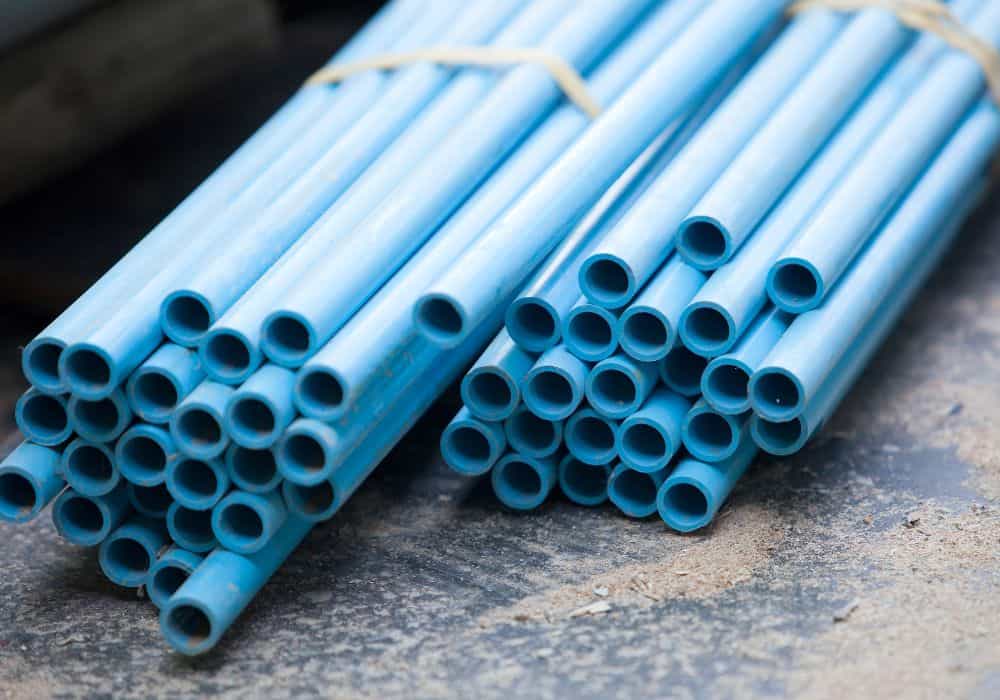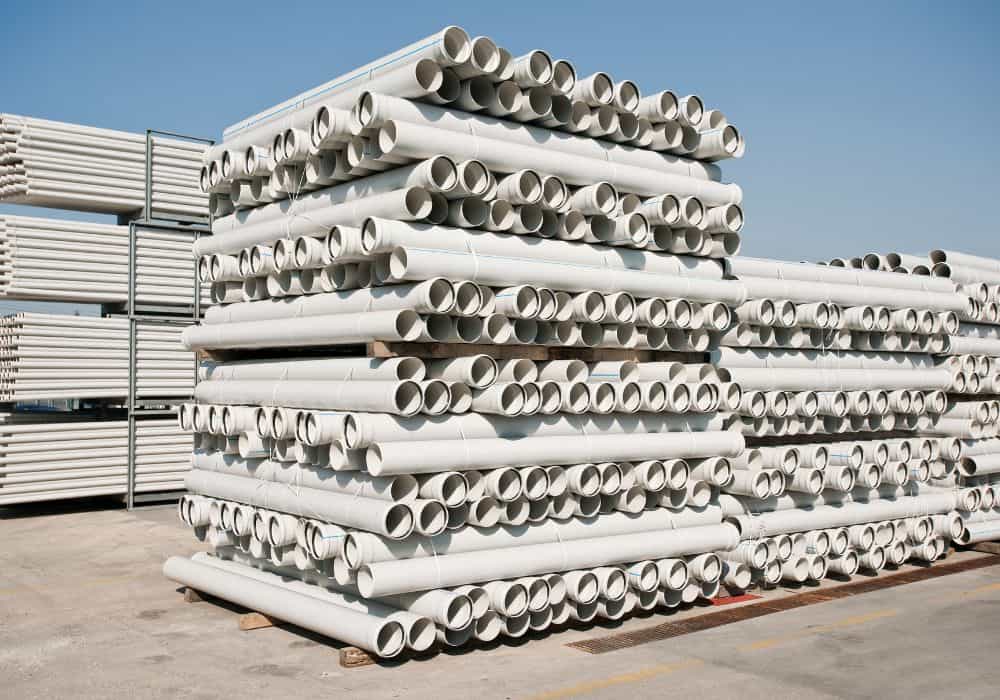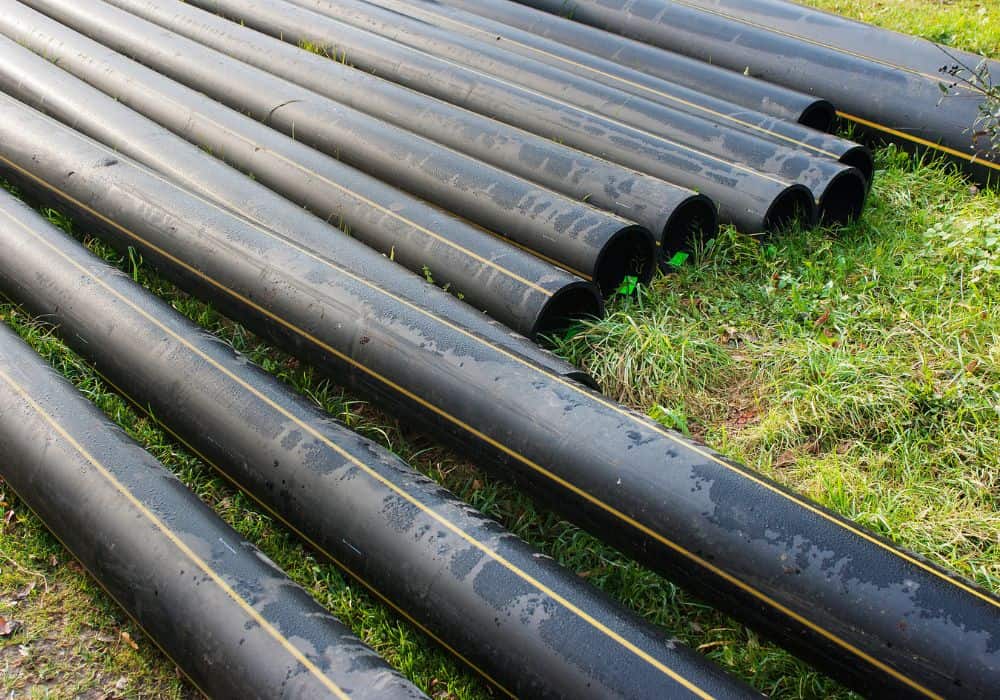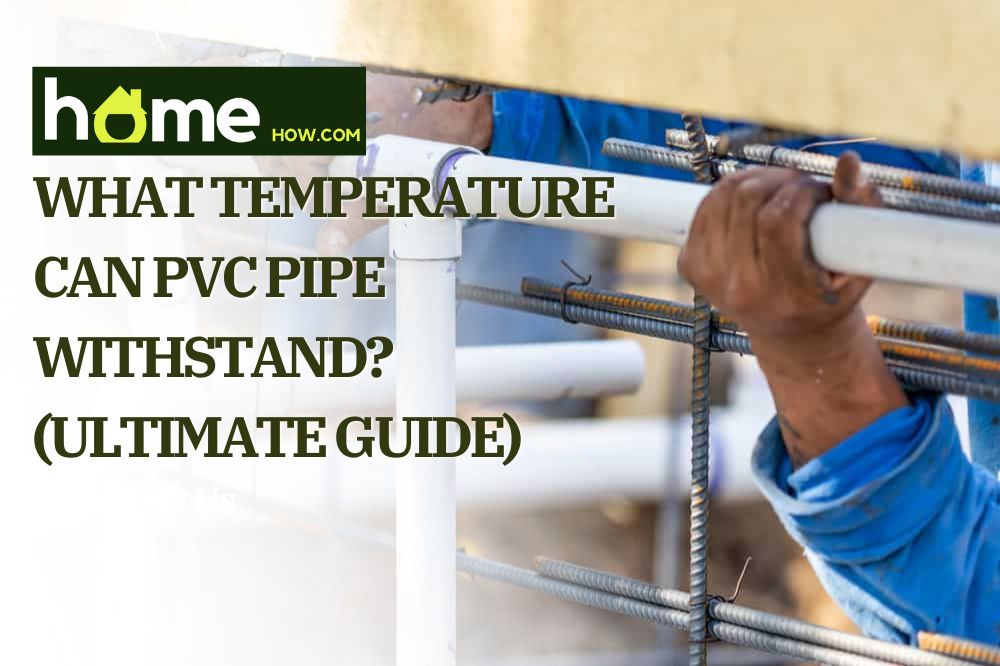Polyvinyl chloride or PVC pipes are the cornerstones of many of our homes. As a thermoplastic material, they are superior to copper pipes in many respects and are used to carry essential things like water, sewage, electrical wiring, or to vent hot air.
PVC pipes are cheap, easy to mold, and even easier to install. It seems as if they are the perfect piece of equipment. But sadly, there is one factor you must consider – temperature.
The pipe can only hold a specific temperature before it suffers structural and integral damage. If you’re wondering what temperatures your PVC pipe can withstand, we’re here to help.
This article will detail the specific requirements of PVC pipes, including tips on supporting them during extreme temperatures. We’ll also explain how to protect your pipes, what signs of stress you should be on the lookout for, and alternatives you may consider.
What temperature can PVC pipes withstand?

What is the maximum temperature PVC pipes can withstand?
Simply put, a PVC pipe’s maximum operating temperature benchmark is 140 °F (60°C). This temperature makes PVC an ideal material used to carry a variety of cool materials like water and sewage, both domestically and industrially.
140 is the maximum threshold, but there are some things you must be mindful of about how your pipe handles an increase in temperature. Consider the pipe size (schedule) and its operating pressures (PSI), as these two can contribute to how your pipe performs under stress.
As temperature increases, the amount of pressure your pipe can handle decreases. A typical example to help illustrate this point is the standard 6″ Schedule 80 PVC pipe, which usually has a PSI of 280. But when working at the maximum temperature of 140° F, the PSI reduces to 62 (280 x .22).
How cold can PVC pipes withstand?
Because PVC piping is so versatile, many people use them to carry water outside for gardening, to connect to external sewage pipes, and more. But if you live in a colder climate or are worried about winter and a freezing environment, you might wonder if cold temperatures can negatively affect PVC pipes.
Temperature decreases can contract plastic pipes, reducing their “impact strength, ” While pipes should still be able to operate normally, this becomes very important if your PVC pipes are carrying water that has the potential to freeze over.
Water expands when frozen and can pressure already-brittle piping and joints. The constant freezing and thawing action can buckle pipes, cracking and fracturing them and creating a series of leaks in your system. A way to counteract this problem is using thicker pipes.
Another problem you might encounter with extreme cold is during incorrect installation. Loose fittings can allow water to enter and subsequently freeze over. An excellent tip to keep in mind when installing PVC piping underground is to keep pipes and goosenecks at least 12″ below frost depth to protect the most vulnerable parts of plumbing.
Does sunlight temperature affect PVC piping?

If you’re living in a warm climate or if summer is fast approaching, you might be worried about temperature changes due to prolonged sun exposure. Direct sunlight is known to erode many different materials over a long period, after all.
The good news is that most PVC piping is made with UV-resistant materials, meaning it will not expand or break during direct or prolonged sun exposure. The only consequence may be a gradual discoloration over some time. This means PVC pipes can be used to connect irrigation systems, as a drain, for gardening, or for outdoor plumbing.
If you doubt the properties of your PVC pipes, you can coat them with simple water-based paint, which acts as an additional layer of protection. Use light or white colored paint to repel UV rays, and avoid oil or solvent-based paints as these can damage plastics.
Thermoplastics – why PVC changes in hot temperatures
To understand how PVC changes with heat, you must know how it is made in the first place.
PVC is a synthetic polymer that can easily be molded into various shapes at high temperatures. Chemicals like chlorine provide fire retardancy, and PVC has natural corrosion resistance properties.
At high temperatures, PVC can be remolded. While this makes it a dream material to use in manufacturing different parts, shapes, and sizes of piping, it does mean it always has the potential to change structurally in extreme heat when set in your home.
You should avoid using PVC pipes for carrying boiling material like hot water because this can cause a sudden burst or fracture across all or part of the pipe. In the below video, you’ll see how heat can affect the pressure capacity of a PVC pipe:
Signs of temperature damage in PVC pipes
Understanding how temperature affects PVC can help you decide where to use this type of plastic but also allow you to spot any signs of potential damage. This is especially the case if piping is above ground and visible.
Three critical areas affected by temperature fluctuations include:
1. Pipe Stiffness
PVC pipes are known as flexible pipes, which can yield under loading “without fracturing.” They can comfortably deflect excess material without any strain on the overall structure of the pipe.
That said, research has shown that an increase in temperature can negatively affect stiffness by as much as 80% in PVC pipes, rendering their innate flexibility useless. This dramatic loss of rigidness can mean pipes lose their structure and risk disconnecting from the rest of the plumbing system.
2. PVC Dimensions
Dramatic temperature changes can affect your PVC pipes’ dimensions, including their length. Some experts say changes can be as much as 3/8″ per every 100 feet of piping. It may take a change of up to 10 degrees in temperature (both warmer or colder) for this to happen.
This can be quite an alarming thing to happen, especially if the dimensions of plumbing pipes change. Consider using a ground penetrating radar (GPR) to detect breaks if your pipes are underground, behind walls, or submerged. And ultimately, avoid any drastic changes in temperature as a preventative measure.
3. Pressure Rating
The pressure rating of PVC is temperature-dependent, with the standard working rate measured at 68°F (20°C). As the temperature rises, you should reduce the working pressure of the PVC pipes. If the temperature drops to freezing, avoid damaging the pipe during its weakened state. This helpful guide helps explain the maximum operating pressure for PVC pipes relative to temperature.
Need to reach a higher temperature? A CPVC Pipe

Let’s say you want a pipe that can withstand temperatures higher than those mentioned above, like a hot water line for your home or business. You may need to consider a different thermoplastic with a higher maximum allowable operating pressure, like chlorinated polyvinyl chloride (CPVC).
CPVC is similar to PVC, except it has a different chemical composition in production, namely extra chlorination. This allows it to withstand temperatures up to 200 °F (93 °C). To combat these extreme temperatures and ensure safety, CPVC has natural fire-retardant and chemical resistance properties instilled in it during production.
Fuirhtmore, CPVC performs better than PVC within PVC’s natural temperature range, making it the superior choice for many different purposes. But, it is, of course, much more expensive than PVC, which is something you must consider.
More often than not, CPVC is perfectly safe to pipe potable water and can even repel the effects of chlorinated water found in our home taps. But to be sure, consult the manufacturer’s guidelines.
Conclusion
PVC is a versatile material used in many, if not all, constructions. It can carry a variety of materials effortlessly and, when well-cared for, can last upwards of 50-80 years. Talk about great value for money.
But melting temperatures pose a difficult challenge for PVC, and the piping will often break or warp when exposed to rising temperatures. Its dimensions and overall structural integrity will suffer significantly.
The best way to ensure your PVC pipe stays in pristine condition is to plan its purpose accordingly. Temperatures may fluctuate, so it’s best to only use PVC when liquid or material never reaches 140F.
If you still have questions relating to PVP piping and the temperatures it can reach, please do leave a comment below. But if in doubt, always remember:
- PVC is a thermoplastic that can withstand 140 degrees F (60°C)
- That said, extreme hot and cold temperatures can affect a PVC pipe’s structure
- Always check the manufacturer guidelines, including pressure rating, for guidance
- A CPVC pipe can reach higher temperatures than PVC, ranging from 180-220 °F
